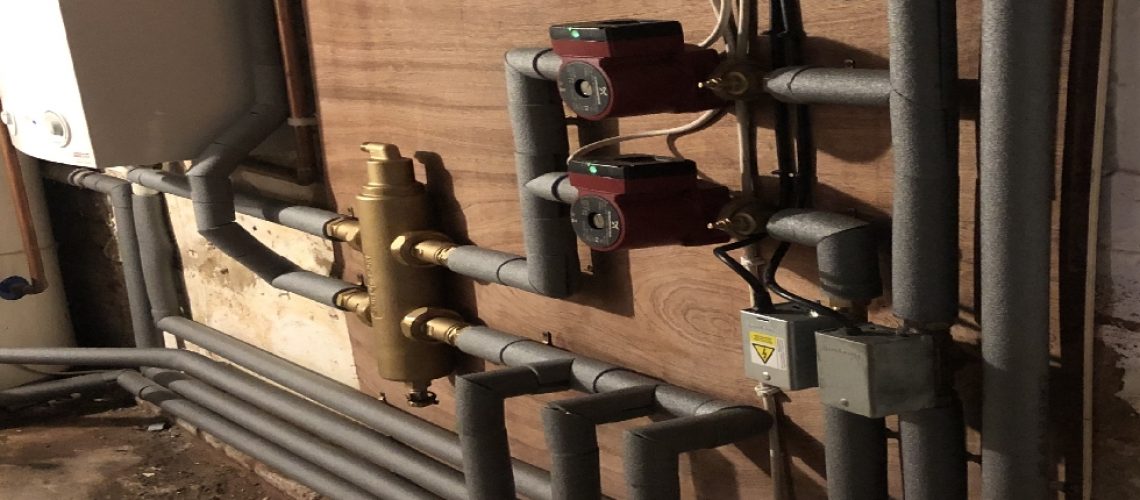We decided to write a central heating guide so that people can get the most out of their heating. Modern boilers today are remarkably efficient at supplying central heating and hot water for your house. Digital technology in this industry provides instant remote heating and hot water control from anywhere in the world. We can instantly boost the heating on our way home from work. Plus we can switch it to a permanently low setting if we forget when travelling away on holiday. This guide explains how your heating system works. For a guide on stored hot water follow this link here, and this link for combination boilers.
Central heating guide to the boiler.
Let us start by looking at how your boiler delivers central heating around your house. The gas boiler circulates water around your home through a network of pipes to each room. In the majority of homes, radiators provide the heating output, however alternative options, such as underfloor and skirting heating are becoming more popular. For the purpose of this explanation, we will use radiators as the heating output.
The heated water in your boiler is pumped through the pipes to the radiators and then returns to your boiler in a loop. As the water in your heating system warms up, the boiler constantly analyses the temperature. When it reaches a set limit, the boiler adjusts the gas required to maintain the heat at that level set by the boiler controls, typically a dial on the front of the boiler.
It is important in this central heating guide to mention efficiency, although we plan to write a comprehensive blog on this subject. For ultimate efficiency, the water temperature leaving the boiler can be as high as 82ºC. This will transfer heat from the radiator to the air in each room as quickly as possible. Caution: the radiators will become very hot to touch! Adjusting the temperature using the boiler controls alters the heat of the radiators which does reduce the efficiency slightly, but you may need to consider this if you have anyone vulnerable who could burn themselves.
Central heating guide to thermostats: room, radiator, and frost.
In addition to the boiler controls, your heating has two external heating controls. There is usually at least one room thermostat that controls the average ambient temperature of the house. Ideally, this is placed in a cooler area of the house to ensure that all other rooms can reach a warmer temperature than that where the room thermostat is fitted. Once the room thermostat has reached temperature, it switches the heating off at the gas boiler, saving you more money.
The second external control is the thermostatic radiator valve (TRV). A TRV can control how much flow enters a radiator. There are a number of settings you can adjust each TRV, plus a frost setting. This provides individual room control: there are rooms in your house you want warmer than others, and TRVs give you the flexibility to alter how warm a room can get. For instance, you may want the bathroom warmer than the bedroom. It may take a bit of trial and error to find the right setting for each room, but once set, the house will now feel comfortable wherever you are.
The final control to mention is frost thermostat. We will be writing an indepth blog on all aspects of cold weather protection. To summarise, this is a safety control feature which is added when boilers are exposed to low temperatures, usually when fitted in a garage or loft space. This thermostat only operates when the temperature local to the boiler is close to freezing. This prevents water freezing in the pipes and the boiler heat exchanger, which can be costly to repair.

